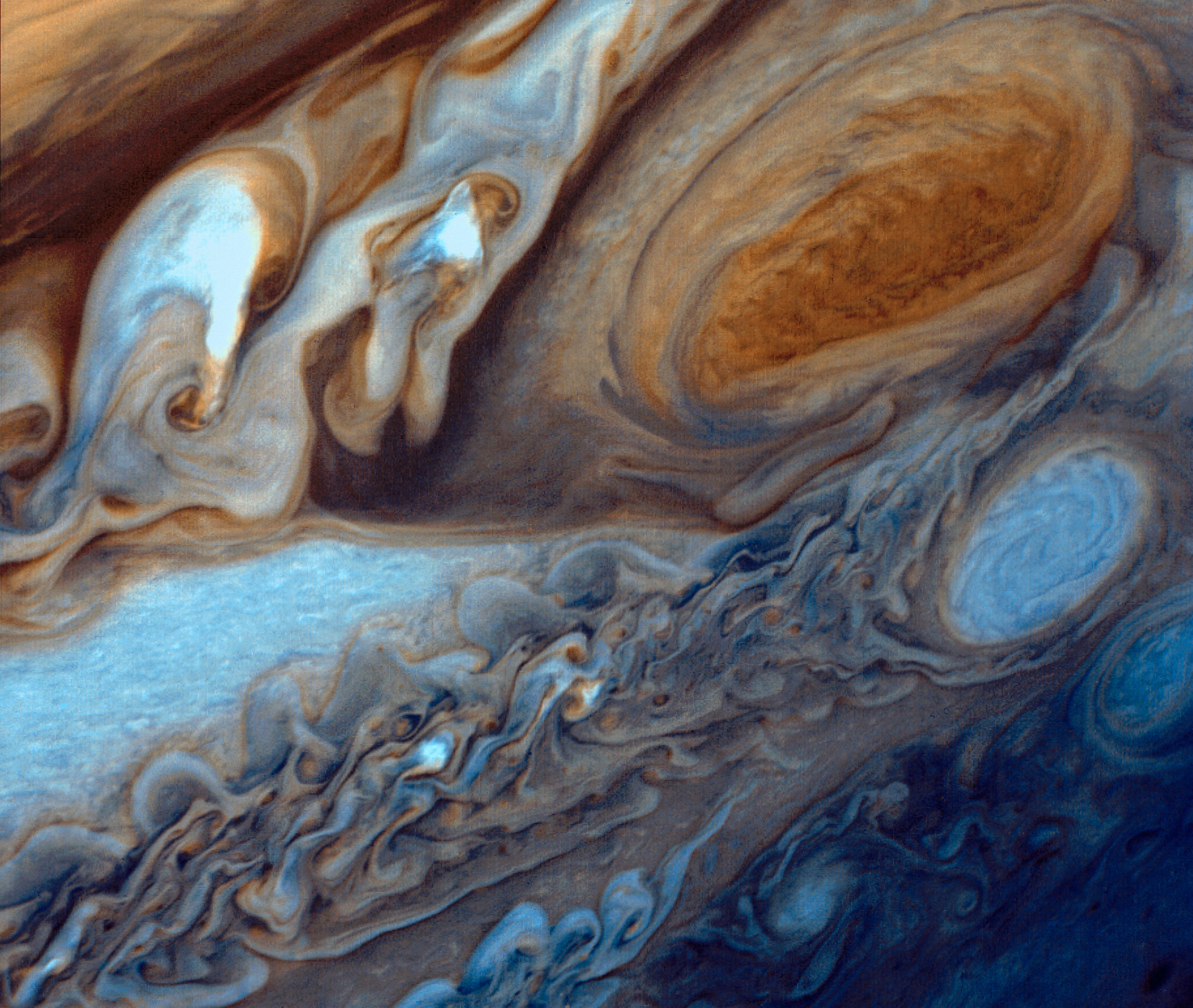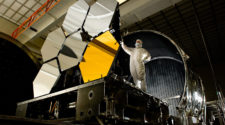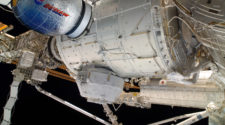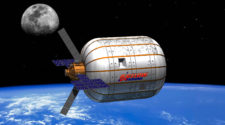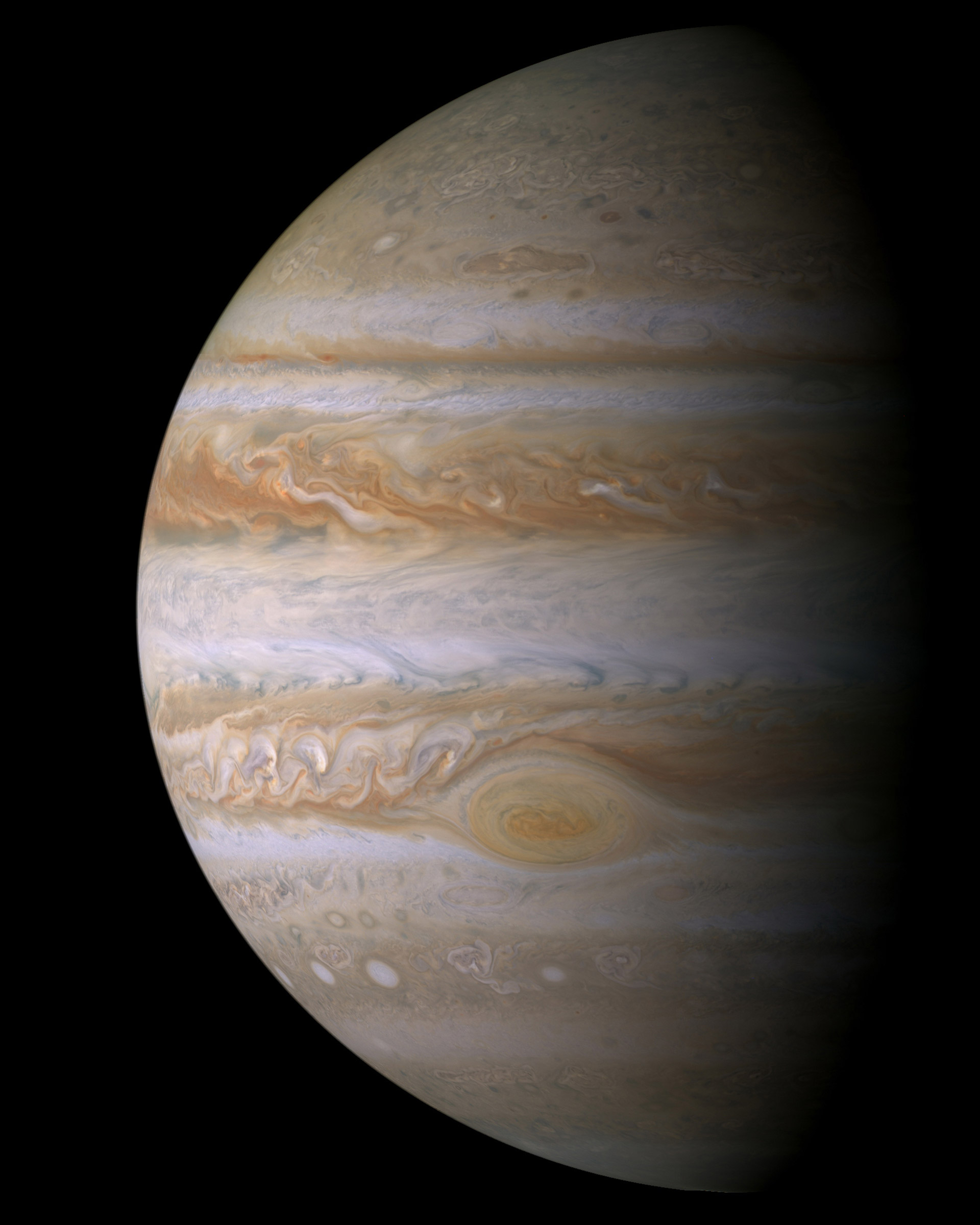
Of all the planets that orbit around our Sun there are two that are easily visible and are fascinating objects to view. These are, of course, Saturn and Jupiter. Of these Jupiter is prominent in our night skies at the moment. At magnitude -2.06 it is the third brightest thing in the sky after the Moon and Venus.
Currently Jupiter is in the constellation of Gemini forming a triangle with the bright stars Castor and Pollux. As the sun sets Jupiter is the first ‘star’ to be seen in the darkening skies to the east. As the night darkens further and the other stars pop into view Jupiter reigns the heavens as it slowly transits from east to west.
Jupiter is the fifth planet from the sun, and is the biggest in the solar system. As an indication of its size it has around two and a half times the mass of all the other planets added together and it’s surface area is 122 times that of Earth. It is currently about 450,000,000 miles away from us, but this can vary depending on the relative positions of Jupiter and Earth in their orbits.
Jupiter is known as a Gas Giant, and as such does not have a hard surface in the conventional way that Earth, Mars etc do. If you were able to survive in the atmosphere you would sink through the gaseous outer layers until you sunk towards the core of the planet. Assuming you were not crushed by the extreme pressures you would eventually find a point where you would float.
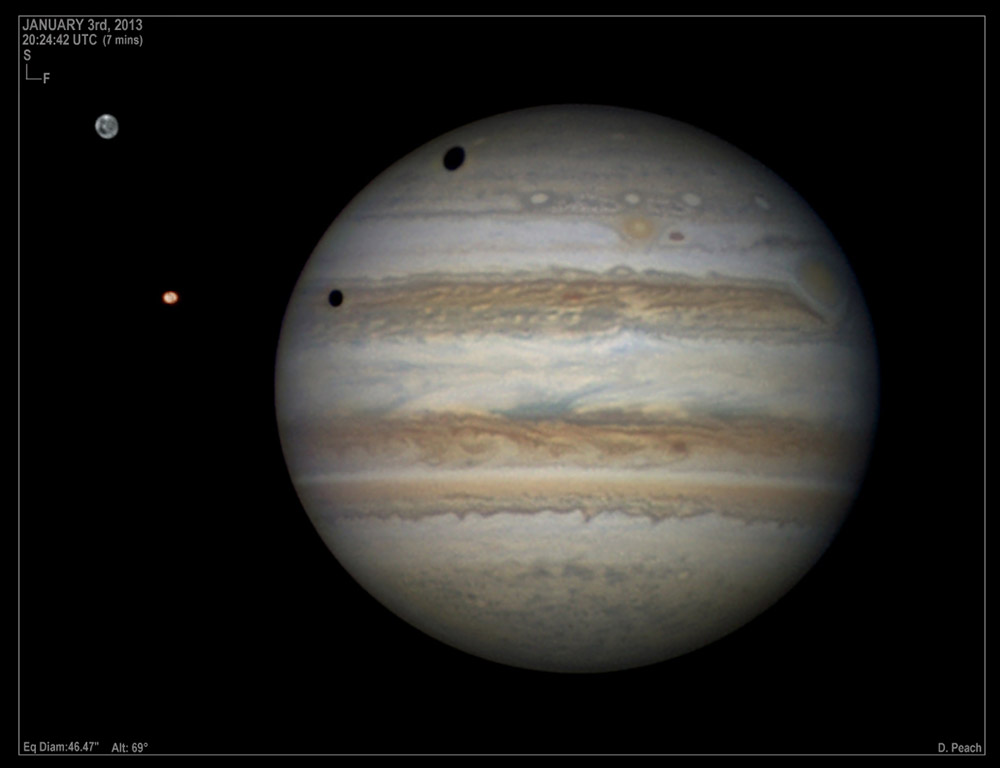
Jupiter is mainly hydrogen (around 90%) and helium by volume in the atmosphere, with other elements appearing in the interior. It is speculated that the core of the planet could be metallic hydrogen.
Jupiter has 67 known moons, but of these there are four that are easily visible in binoculars or a telescope. These are the Galilean Moons of Io, Europa, Ganymede and Callisto. These are seen strung out in a line orbiting the planet. Sometimes the moons pass in front of Jupiter. This is known as a transit. The moon is difficult if not impossible to see when this happens, but the shadow of the moon can be clearly seen transiting the surface. Damian Peach managed to capture a fantastic image of Jupiter with two moons and the shadows. For more images of Jupiter visit Damian’s site at www.damianpeach.com.
One of the beautiful features of Jupiter is the atmosphere, in particular the storms raging across it. One very well known feature is the Great Red Spot (GRS) which is the vortex of a storm that is larger than the Earth. This storm has been circulating for hundreds of years and is still going strong today. It is possible to see the GRS as it rotates around the planet. There is a calculator predicting when it will be in central view on the Sky and Telescope site at www.skyandtelescope.com/observing/objects/planets/3304091.html.
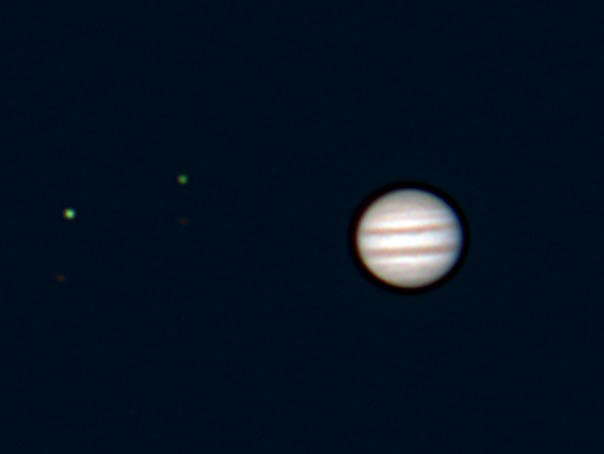
Other features that can be seen by the amateur are the main Northern and Southern Equatorial Belts, and the two polar regions. The Great Red Spot can be distinguished on a night with good seeing. With a larger telescope the temperate belts come into view as do some of the white ovals.
It is actually quite easy for an amateur astronomer to capture images of Jupiter with a modified webcam. I tried this myself on an old Microsoft webcam. The conversion cost about $15 and the results were almost as good as my $200 dedicated planetary camera. The image of Jupiter with Callisto and Ganymede shows what can be achieved with a webcam. The equatorial belts are well defined, as are the polar regions, the northern temperate belt can also be seen, but the southern one cannot.
Jupiter will be in the skies for some time now so why not take the opportunity to have a look at it. If you do not have a telescope then look up your local Astronomy Club, most will be very willing help.
